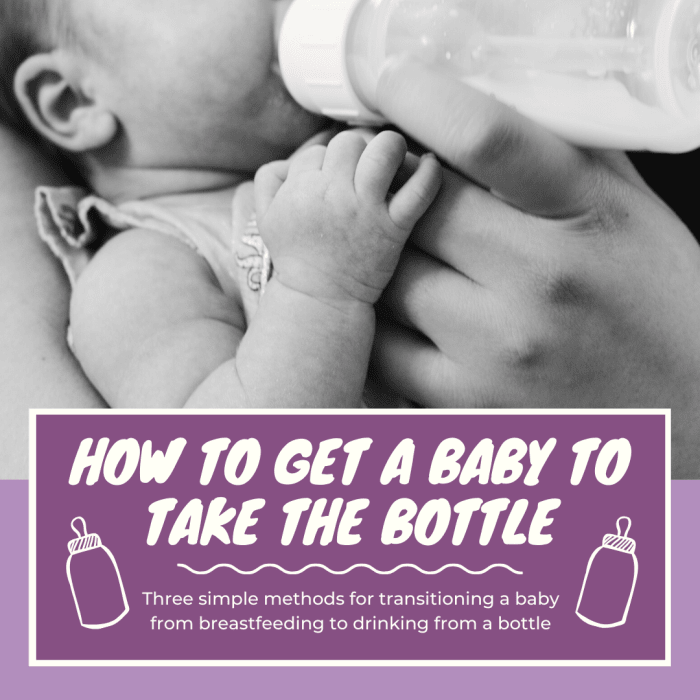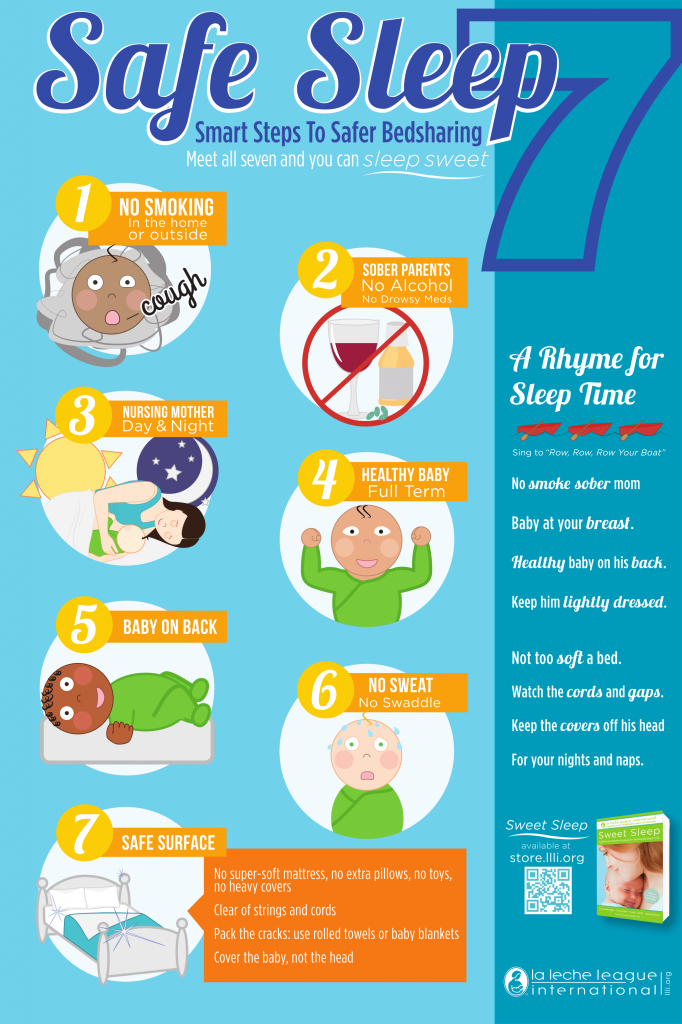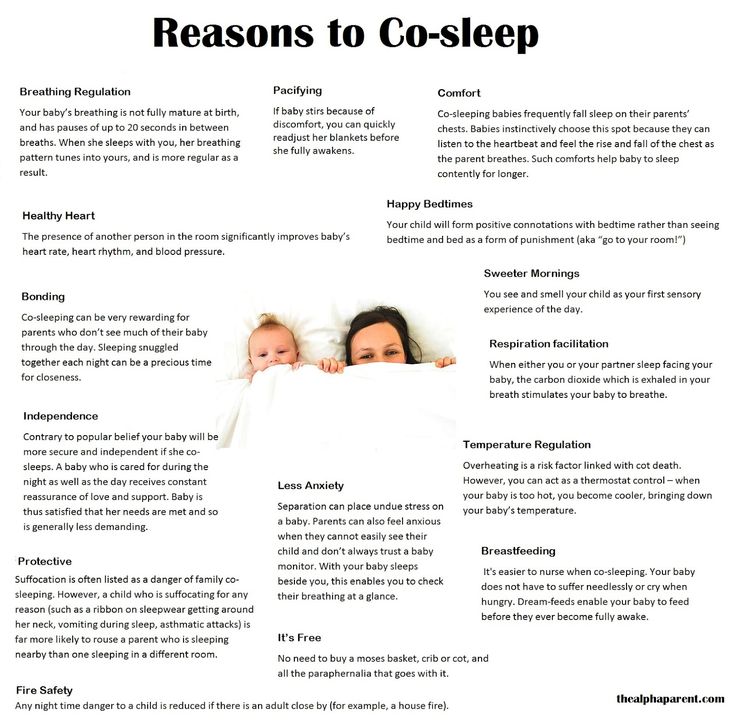Sleepy baby not feeding much
Sleepy Baby – Why And What To Do
Nobody likes to disturb a sleeping baby, but sometimes a baby can be too sleepy for their own good. At times like this they may need you to take action.
Your newborn baby needs to nurse actively for one or both breast at each feed. Offer the second breast after they seem to have finished at the first, although they may not want both sides at every feed.
What makes a baby sleepy?
Recovering from birth: In the first few days, some babies are sleepy or uninterested in feeding. It’s especially true for small babies, after a difficult labour or birth, or if you received drugs for pain relief during labour.
Jaundice or an infection may make a baby sleepy. Newborn jaundice is normal but frequent breastfeeding helps prevent it becoming a problem.
Not enough milk: Your baby may sleep to conserve energy if they are not getting enough food. They may also sleep longer that is good for them if they are apart from you.
Is my baby too sleepy?
To gain weight and stimulate your milk production, expect your newborn to:
- Breastfeed effectively at least 8–12 times in 24 hours
- Feed actively from one or both breasts at each feed, swallowing regularly.
- Nurse at least every 2–3 hours from the start of one feed to the next, with one longer sleep of 4–5 hours.
- Have periods where they breastfeed on and off for several hours, usually in the evening.
- Gain weight from day 4 and regain birth weight by about two weeks.
Look at our page Beginning Breastfeeding for more information. If your baby is too sleepy to do all these things they may need your active help to ensure they are nursing effectively and getting enough milk.
Is my baby getting enough milk?
A baby may lose up to 7% of their birth weight during the first few days. From around day 3-4, expect them to start gaining, and to regain their birth weight by 10-14 days. Many breastfed babies gain around 200-235g (7-8oz) as week for the first 2-3 months. If you baby consistently gains less, or they haven’t regained their birthweight by 14 days, seek skilled help to assess whether they are getting enough milk. What comes out is a sign of what has gone in, so counting dirty nappies can be a useful guide between weighing sessions. For more information to help you know if your baby is getting enough milk in the first few days, you could read our article here about signs of effective feeding in the early days. And then after the first few days, this article will help you decide if your baby is getting enough milk.
If you baby consistently gains less, or they haven’t regained their birthweight by 14 days, seek skilled help to assess whether they are getting enough milk. What comes out is a sign of what has gone in, so counting dirty nappies can be a useful guide between weighing sessions. For more information to help you know if your baby is getting enough milk in the first few days, you could read our article here about signs of effective feeding in the early days. And then after the first few days, this article will help you decide if your baby is getting enough milk.
| Age | Dirty nappies per 24 hours |
|---|---|
| 1-2 Day | 1 or 2 greenish-black tarry meconium poos |
| 3-5 days | At least 3 green transitional poos |
| 5+ days | At least 3-5 yellow, loose unformed poos the size of a 2p coin or larger |
Remind your baby to nurse
If your baby is too sleepy or groggy to rouse themselves every few hours, you will need to wake them to feed to ensure they get enough milk. This will be easier if your baby is in a light sleep cycle: watch for rapid eye movements under their closed eyelids, arm and leg movements, sucking activity and changes in their facial expression.
This will be easier if your baby is in a light sleep cycle: watch for rapid eye movements under their closed eyelids, arm and leg movements, sucking activity and changes in their facial expression.
- Aim for your baby to feed at least 10 times in 24 hours, including at least once at night
- Encourage active nursing on the first breast, watching and listening for signs of swallowing.
- Use breast compression (see below) to keep your baby nursing actively.
- Offer the other side in the same way. You can switch back and forth several times if it helps your baby stay awake and feed.
- Encourage cluster nursing whenever your baby is more alert.
- Give expressed milk if they aren’t feeding well.
- Keep them close by—day and night—so they don’t sleep too long and you don’t miss their feeding cues.
Also try
- Dimming the lights and keeping your surroundings quiet and peaceful.
- Keeping the room temperature at around 18°C or undressing your baby a little if the room is warm.
 Being too hot can make a baby sleepy.
Being too hot can make a baby sleepy. - Unwrapping any blankets.
Newborn feeding cues
Signs of interest in feeding include:
- Mouth movements; smacking or licking his lips
- Sucking on lips, tongue, hands, fingers, toes, toys or clothing
- Rooting, head bobbing or nuzzling against whoever is holding them
- Fidgting and squirming a lot
- Fussing
- Crying – a late sign of hunger.
Do offer feed generously. A newborn won’t find it easy to feed well, if they have to wait and reached late hunger signs.
Helping your sleepy baby
Positioning and attachment
Getting a deep, comfortable latch is crucial. If your baby is not latched on well at the breast, they will have to work harder to get your milk. They may tire easily and fall asleep. Sometimes just a small adjustment to the way your baby comes to the breast can make a huge difference. An LLL Leader can provide individual suggestions tailored to your circumstances. If your breasts are engorged, gently hand express a little milk and/or ease swelling back with your fingertips to make it easier for your baby to latch on deeply and prevent you getting sore. See our longer article about Positioning and Attachment for more help on how to help your baby latch well, feed effectively and be comfortable for you.
If your breasts are engorged, gently hand express a little milk and/or ease swelling back with your fingertips to make it easier for your baby to latch on deeply and prevent you getting sore. See our longer article about Positioning and Attachment for more help on how to help your baby latch well, feed effectively and be comfortable for you.
Copyright Suzanne Tobin
Seek skilled help early on if you are finding breastfeeding difficult or uncomfortable.
Laid back breastfeeding
Try letting your baby lie on your body with their chest and tummy against you as you recline at about 45 degrees. If they can snuggle up close to your chest for periods of time, even when sleepy or during light sleep, they will often instinctively seek the breast and attach deeply and comfotably even during light sleep. This can be done skin-to-skin or with you and your baby lightly clothed. Watch for signs your baby is stirring and gently encourage feeding. Spending time relaxing like this can make a real difference to how well your baby feeds and how much milk you make. Our page on Comfortable Breastfeeding has more ideas.
Spending time relaxing like this can make a real difference to how well your baby feeds and how much milk you make. Our page on Comfortable Breastfeeding has more ideas.
Breast compression
If your baby starts to doze at the breast, this technique will help him breastfeed actively and take more milk.
- Cup your breast with your hand, near your chest wall, thumb opposite fingers in a C shape. Keep your hand well back from the nipple area.
- Wait while your baby breastfeeds actively, with their jaw moving all the way to his ear. When they stop swallowing, compress your breast firmly. They probably start swallowing again. Hold it squeezed until they stop nursing actively, then release your hand.
- Rotate your hand around your breast and repeat step 2 on different areas of the breast as needed. Go gently—this should not hurt.
Try switching breasts at least two or three times during each feed—when your baby comes off the first breast on their own or when breast compression no longer keeps them breastfeeding actively.
Express milk for your baby
Until your baby gets the hang of feeding you may need to do some work for your baby. If they aren’t latching at all, or is not feeding well and gaining weight, then expressing your milk will help establish milk production. The earlier you start, the sooner you’ll produce plenty of milk. Hand expression is often easiest at first but when your milk comes in combining hand expression with pumping can be most effective.
Giving expressed milk
First, encourage your baby to nurse at both breasts. Watch for swallowing and use breast compression an switch nursing until they stop drinking and start to doze.
Next, give your baby expressed milk until they have had enough. (For more on how to give additional milk, our article here). Giving your baby your expressed milk after breastfeeding can help them overcome sleepiness and feed more effectively next time.
Then, once your baby has settled, express from both breasts switching back and forth and using compressions and hand expression to get the available milk. Store this milk in the fridge ready for the next feed.
Store this milk in the fridge ready for the next feed.
Aim to complete this process within about an hour.
Avoid bottles and dummies
You can give small amounts of expressed milk using a spoon, flexible feeding cup or syringe. If you decid to use bottles for larger amounts, you can give the bottle in a way that helps protect breastfeeding. For more information on ways to give your baby milk and bottles see our article on Bottles and other tools. An alternative is to use a nursing supplement: this acts like a straw to deliver extra milk through a tube along your breast as your baby nurses, avoiding the need for bottles. Our article Nursing Supplementers explains more.
Don’t give up too soon
If your baby doesn’t respond quickly to your efforts to get him to breastfeed more often and more effectively, don’t give up. Keep your baby fed, Keep your supply protected and Keep your baby close. You may find our article on Getting breastfeeding back on track after a tricky start helpful. Check with your doctor to eliminate any medical reasons and contact your local LLL Leader to find one-to-one breastfeeding help. You can find support and encouragement from breastfeeding mothers in your local LLL Group too.
Check with your doctor to eliminate any medical reasons and contact your local LLL Leader to find one-to-one breastfeeding help. You can find support and encouragement from breastfeeding mothers in your local LLL Group too.
Written by mothers of LLLGB. Photos courtesy of Ellen Mateer and Suzanne Tobin.
Further Reading
Comfortable Breastfeeding
Positioning and attachment
Engorged Breasts – Avoiding & Treating
Hand Expression of Breastmilk
Is my baby getting enough milk?
My Baby Needs More Milk
Nursing supplementers
Jaundice in Healthy Newborns
Getting back on track after a tricky start – the Three Keeps
My baby won’t breastfeed
Bottles and other tools
Other websites
Biological Nurturing™: www.biologicalnurturing.com/video/bn3clip.html
Natural Breastfeeding Position video, Nancy Mohrbacher:
Benefits of skin-to-skin contact: www.kangaroomothercare.com
Books
The Womanly Art Of Breastfeeding. LLLI, London: Pinter & Martin, 2010
LLLI, London: Pinter & Martin, 2010
This information is available to buy in printed form from our shop.
Copyright LLLGB 2020
Updated June 2022
Signs of effective feeding in the early days
Most babies are keen to feed in the first 90 minutes after they are born especially if they are in skin-to-skin contact with their mum.
If your baby is too sleepy to take this first feed or needs medical attention, it’s a good idea to ask your healthcare team to show you how to hand express and give the colostrum by teaspoon or syringe. He may sleep for a few hours after this first feed – feel free to cuddle him and wake him if you want to feed. He may feed four to five more times in the first 24 hours.
After that first 24 hours we know that babies who are getting adequate amounts of milk will wake to feed at least eight times over a 24-hour period (10 to 12 times being more likely) so it is valuable to keep an eye on numbers and offer feeds even if the baby does not seem to be actively asking.
Babies need to feed frequently; this encourages your milk to increase in volume. Once your milk is coming in, after about 48 hours or so, you may hear your baby swallowing. You may also notice that your breasts feel fuller and that after your baby has fed they soften a little.
Babies who are excessively sleepy, reluctant to wake or who only wake briefly and suckle for very short times will need some extra milk, and your colostrum is best. Learn how to hand express and give your expressed colostrum frequently, until your baby is waking, keen to latch and is doing active sucking and swallowing, with pauses.
Your baby will be content and satisfied after most feeds and will come off the breast on his own. A period of cluster feeding each day (or night) is common. When a baby is cluster feeding he may be very keen to breastfeed a lot and not want to settle to sleep for three or four hours.
However, if you feel he is never really satisfied after feeds, trust your instincts: some expressed milk might help. Seek help with positioning and attachment so that your baby can learn to extract milk efficiently himself.
Seek help with positioning and attachment so that your baby can learn to extract milk efficiently himself.
You can get support from LLL here.
These videos may help with positioning and attachment:
https://www.youtube.com/watch?v=wjt-Ashodw8
https://vimeo.com/11692547
There are more videos along with images and descriptions in our post: Positioning & Attachment
Keeping an eye on his nappies can help you know if he is getting enough milk
Poos
At first poo is sticky, black, and almost tar like. This will become greenish, less sticky, and wipe off your baby’s skin easier! By day three/four you will notice the poo change colour to mustard yellow, and it will be soft and seedy. Two or more of these poos every 24 hours are a sign your baby is getting enough milk in the early days. After three full days (72 hours) your baby should produce at least three poos per day.
By five to six weeks your baby will develop his own pattern and may go days without a poo. Providing he is gaining weight ok, poos are no longer as important for being confident he is getting enough milk.
Providing he is gaining weight ok, poos are no longer as important for being confident he is getting enough milk.
Wees
At first your baby may not pass much urine but this increases each day. If you have had extra fluids during labour and birth your baby may produce extra urine for the first 24 hours or so. By day two look for two wet nappies over 24 hours, days three and four look for three or more wet nappies each 24 hours. By the time your baby is five days old, wet nappies should be more frequent, usually six or more over 24 hours. If your baby’s urine output is less than this or you see red/orange specks in your baby’s nappy, (these are called urates) your baby could do with some more milk.
It can be tricky to tell if disposable nappies are wet – after five full days, when copious milk comes in, they should be heavy.
Many disposable nappies have a faint line down the middle of the nappy which changes colour when wet.
If you are worried your baby isn’t getting enough milk, consider hand expressing your milk. You can feed the expressed milk by teaspoon, cup or directly into his mouth. With some extra milk your baby will generally start to wake more and feed more actively. If you are concerned that your baby isn’t well contact your midwife or GP.
You can feed the expressed milk by teaspoon, cup or directly into his mouth. With some extra milk your baby will generally start to wake more and feed more actively. If you are concerned that your baby isn’t well contact your midwife or GP.
There is more information in these posts:
Is my baby getting enough milk?
My baby needs more milk
Breastfeeding concerns
Occasionally there is reason to be concerned about a baby’s weight gain or the way he is breastfeeding. Here are some signs that your baby may not be getting enough milk at the breast:
- If your baby has not regained his birth weight by two weeks of age
- If baby is passing less urine and pooing less frequently than described above, or his poos remain dark, then seek additional support and give more milk. Older babies may have bowel movements less frequently
- If baby is nursing fewer than eight to twelve times in 24 hours in the early weeks
- If baby is not waking to nurse at night
- Your baby is never satisfied after feeds
- Breastfeeding is very painful all the way through a feed
- You don’t feel signs of your milk coming in after day three
If you are concerned about your baby or s/he shows any of these signs, seek help with breastfeeding from your healthcare team and La Leche League.
Find LLL support here or call our national helpline on 0345 120 2918.
Any of the following are signs of dehydration and the need to seek medical help immediately:
- less than two wet nappies in 24 hours from the third day
- listlessness
- lethargy
- weak cry
- skin loses its resilience (when pinched it stays pinched looking)
- dry mouth, dry eyes
- the fontanel (soft spot) on the head is sunken or depressed
- fever
This list is not exhaustive and we stress that you should consult your Doctor, Midwife, Health Visitor, or other healthcare provider if you have any concerns about the health of your baby. Breastfeeding support can continue alongside any necessary medical treatment. A La Leche League Leader (breastfeeding counsellor) can provide further information on breastfeeding management. Get LLL support here.
the whole truth about the “regime” of a child in the first six months of life
Soviet textbooks and our mothers and grandmothers brought up on them say: a child should have a daily routine. Only in this way will he grow up healthy, and his mother will have time to do household chores. But how real is the regime and does the baby need it at all? What you need to know when trying to build the perfect day for a baby, we figure it out together with a pediatric gastroenterologist and a breastfeeding consultant.
Only in this way will he grow up healthy, and his mother will have time to do household chores. But how real is the regime and does the baby need it at all? What you need to know when trying to build the perfect day for a baby, we figure it out together with a pediatric gastroenterologist and a breastfeeding consultant.
VS Mode Rhythm
The regime in the "Soviet" sense, when a child's day was scheduled literally by the minute, is a thing of the past. Not a single doctor today will suggest that you constantly look at the clock, calculating the minutes until the baby sleeps. But eating and sleeping on time is really good for the health of the nervous system of both the baby and his parents. Understanding this paradox means understanding what it means to “do everything on time”?
Here everything is simple and purely individual.
On time - this is so that both the child and you feel good. And this, of course, is no longer a regime, but rather a rhythm convenient for everyone.

It depends on the temperament and biorhythm of the child, his state of health.
In modern pediatrics, certain norms of sleep, wakefulness and nutrition of babies in the first year of life are determined. It is important to remember that these data are really averages. If a child sleeps more, eats less and vice versa, then this can be considered an abnormality only in case of strong deviations, and it is the doctor who must make the decision that “something is wrong”.
The life of a child of the first half of the year consists of three fundamental things: sleep, food and wakefulness. He "should" sleep from 20 hours a day in the first month of life to 14 hours closer to 6 months (2-4 hours at a time). He "should" eat 8 times a day at the very beginning of life and up to 4-5 times closer to six months, while for one feeding at the very beginning he "should" eat 70-100 ml of liquid, and by 6 months - up to 240 ml.
Let's emphasize once again that these norms are average, and let's talk about how much control each of these positions needs to be and what can come of it in reality.
Sleep
Sleep is one of the most important components of a baby's life in the first half of the year. A well-sleeping child will not be too capricious on time, will be ready to explore the world and eat well. It can be said that a child's sleep is a concept that determines the quality of life of the whole family and the quality of development of the infant himself.
If you can't manage your child's sleep, let's find out what can be done.
1. Do not blame yourself
First of all, do not consider yourself a bad mother if the child “does not sleep”, “screams all the time”, “confuses day with night”, etc. You are a good mother, and these are just temporary difficulties.
2. Analyze: is it really so bad?
If the baby sleeps a little, and then wakes up happy and ready for learning, then this is his rhythm. You just have to adjust and know that the period of infancy is very short, and the rhythms of the child will change. If your child frequently wakes up crying, check to see if he is hot, cold, stuffy, damp, or just plain hungry. Sometimes it is enough to let fresh cool air into the room, and the child begins to sleep for hours.
Sometimes it is enough to let fresh cool air into the room, and the child begins to sleep for hours.
But if you know that all the external “comfort parameters” are met, the baby is sleeping or obviously wants to sleep, but something is bothering him - he pulls his knees up to his chest, arches and wakes up crying, not having time to sleep properly - tell about it to the pediatrician. Perhaps the baby has colic, then the doctor will give recommendations on what to do with gas formation.
3. Try to follow the baby's rhythm
For example, watch your baby for signs that he is tired and ready to sleep. If at this moment you start to put the child to bed, he will fall asleep pretty quickly. Pay attention to how much sleep the baby needs so that after that he wakes up relatively satisfied, and then you can calculate your free time during the day.
Signs that the child is ready to sleep are:
- rubs eyes, ears, yawns;
- becomes capricious, restless;
- it is impossible to interest him in anything, he does not like everything;
- becomes too active, excited.

In order for the child to sleep well and, on waking up, to be able to fall asleep on his own, introduce simple rituals that the infant will associate with going to bed, and make sure that he avoids lack of sleep or, conversely, overexcitation.
Note the intervals of wakefulness, after which the child easily goes to sleep.
Knowing this, 15-30 minutes before bedtime, you can turn on certain calm music, dim the lights, talk to your baby in a calm, low voice. As a ritual before going to bed, there can be water procedures. Perhaps it makes no sense to do this from the first month of life, but from three months it is quite possible to start.
It is important to remember that a child who is constantly sleep deprived will become more restless every day, because he will produce and accumulate the stress hormone cortisol. The same thing happens with the baby when overexcited.
Watch your child, set a goal for yourself to "get the rhythm", and you can really plan your day a little and rest at night.
Food
Breastfeeding is considered the best type of food for a baby during the first 6 months of life. At the same time, it is recommended to feed the child “on demand”. The main thing here is to understand what exactly the child requires.
Do I need a "regime" when breastfeeding? What problems can arise and how to solve them? Tells lactation consultant Yulia Anatolyevna Chistova:
“The process of breastfeeding seems simple and natural until you experience it in practice. In reality, questions about breastfeeding begin already in the delivery room and continue to excite mothers for weeks, or even months.
The first stage of feeding a baby after childbirth is feeding with colostrum, a special concentrated liquid that is excreted in a very small volume. The baby at this time loses weight for a number of physiological reasons, and many mothers panic: there is almost nothing in the chest, and the child is losing weight. However, weight loss immediately after childbirth is a completely normal process.
Many babies are very sleepy after giving birth, and, as absurd as it may seem, they often need to be woken up for feeding, because they can oversleep from weakness. The general recommendation is to feed newborns at least once every three hours.
In the next stage, the breast begins to produce milk, and for some women, especially nulliparous, "milk coming" is an unexpected and not very pleasant process. The chest may swell, become hard and painful. Here, of course, the help of the child will be invaluable: the rhythm of feeding should correspond to the rhythm of breast filling, and after feeding it should become soft and painless.
Of particular importance here is not only how often and for how long the baby suckles, but also how he does it. If questions arise, a specialist will help determine the quality of application, and the mother, first of all, should be guided by her feelings - feeding should be completely painless, and the breasts should empty well. As a rule, feeding at this stage takes 30-40 minutes, during which phases of active sucking with visible and audible throats alternate with phases of sleep and weak sucking.
As a rule, feeding at this stage takes 30-40 minutes, during which phases of active sucking with visible and audible throats alternate with phases of sleep and weak sucking.
How can you tell if a child is eating? It is best to focus on objective indicators: the increase from the moment of weight gain should be at least 20 g per day (and preferably from 150-200 g per week), weight recovery at birth should occur no later than two weeks of age, and the child should fill 6-8 diapers daily and have a stool at least 1 time per day.
Feeding rhythms during the first 28 days gradually change from chaotic to more orderly. Uniform answers to the questions “how much and how often does a baby need to be at the breast?” not to be found: you need to carefully evaluate what is happening and trust the objective assessments of the growth and development of the baby.
Sometimes the baby will want to breastfeed more often, on other days he will hint at a willingness to tolerate some intervals between feedings. At the same time, one must understand that not every child is able to eat in uniform portions and withstand without a breast for as long as it would be convenient for mothers. We, adults, also do not eat according to strict rules and norms, but listen to our appetite and well-being.”
At the same time, one must understand that not every child is able to eat in uniform portions and withstand without a breast for as long as it would be convenient for mothers. We, adults, also do not eat according to strict rules and norms, but listen to our appetite and well-being.”
Marina Yulianovna Stepanyan, a pediatric gastroenterologist , also talks about the possibility of a "mode on the chest":
“Over the past 15 years, the rules for feeding a newborn baby have changed significantly. For the first 6 months of life, it is imperative to feed the baby without a regimen, on demand, the child regulates his hunger on his own and eats different portions of milk at each meal, which immediately eliminates two main misconceptions: feed by the hour and weigh after each feeding. It is impossible to overfeed a child with mother's milk.
The main rule of feeding - the greater the demand of the child, the more milk will be.
Until 6 months of age, there is no point in distracting the child, looking for calming mechanisms outside of breastfeeding.
If you are worried that your child rarely asks for food, then pay attention to weight gain. The main criterion for proper feeding is the monthly increase in accordance with the established norms. If your child is not gaining weight well or is having trouble suckling, if he is restless, or has foul-smelling loose or hard stools with impurities, this is a reason to contact a specialist - a pediatric gastroenterologist.
In the case of artificial feeding, things are a little stricter. It is important to follow a certain feeding regimen here, since the formula is digested longer than mother's milk, and the phrase "feeding on demand" is no longer 100% suitable. But how to eat right for your “artificial” child will be answered by a pediatrician who observes the baby and knows his state of health. It is he who will help calculate the right amount of the mixture at one time and indicate the approximate number of feedings.
In order for a bottle-fed baby to feel good, it is important to choose the right formula. After all, discomfort in the child's stomach makes not only him, but the whole family worry: there is no time for rhythms.
After all, discomfort in the child's stomach makes not only him, but the whole family worry: there is no time for rhythms.
This material was created with the support of Bellakt. Bellakt is the only manufacturer of dry baby food in Belarus and one of the largest producers of dry baby food in the CIS. This is a modern, high-tech enterprise producing baby food, dairy products, food for pregnant and lactating women. Time-tested quality. Manufacturing experience since 1970g.
If your child is already starting to actively eat purees and cereals, look for an adapted formula that will meet his needs - Bellakt NEW 6-12 .
Bellakt is a new and improved formula based on the latest recommendations from leading baby nutrition experts. The products in this range do not contain palm or rapeseed oil.
For optimal growth and development, the composition of the mixtures is enriched with components: polyunsaturated fatty acids Omega-3 and Omega-6, lutein, nucleotides and prebiotics.
Bellakt mixes are produced using special technologies and without the use of powdered milk! This means that mixtures prepared on the basis of fresh normalized milk undergo a single high-temperature drying, which allows preserving the nutritional and biological value of the protein.
Wakefulness
The periods of wakefulness in a baby up to six months are not so long, but they require mother's attention. Note that this does not mean at all that you should constantly carry it on your hands. If the child woke up in a good mood, not hungry, then he may well “have fun” himself. Lay it on a developmental mat or in a lounge chair and go about your business, but always keep your baby in sight.
At first, these hands-free periods will be short, but over time, the child will become more and more interested in the world around him. Make sure your child is safe and comfortable during self-study. It is not worth leaving him alone in spite of crying: he will associate a play mat and a deck chair with negativity.
Notice how long a child is able to stay awake before he starts rubbing his eyes, yawning and acting up - and this will be another part of your daily rhythm. Remember, it is important not to miss the moment when it is physiologically time for the baby to eat and sleep. But if you know for sure that it’s “not time” yet, try to distract the child, switch to toys, books, or just change his diaper. And remember, you are a good mom.
Special project "Artificial feeding: when a mother needs help"
- Infant food allergy: how to treat and what to feed
- Mixtures are not the same, or what our grandmothers fed babies
- You won't wish it on your enemy. How to survive baby colic
- Sleeps poorly, eats a lot and vice versa: the whole truth about the "regime" of a child in the first six months of life
All special project 9 materials0003
— share with your friends!
Experts: Marina Yulianovna Stepanyan Yulia Anatolyevna Chistova
Why a child eats little: how to fix the situation
12/29/2019
2
When it comes to eating habits, we cannot predict how our child will eat. Especially when the baby is already growing up. Some days he may not eat anything, and other days it will seem to you that he eats all day. You can observe such periods of eating behavior starting from 2 years. A child can eat the same food every day for several weeks in a row, and then suddenly say that he stopped loving it. The amount of food your baby eats may be different from the portion size another child eats.
Especially when the baby is already growing up. Some days he may not eat anything, and other days it will seem to you that he eats all day. You can observe such periods of eating behavior starting from 2 years. A child can eat the same food every day for several weeks in a row, and then suddenly say that he stopped loving it. The amount of food your baby eats may be different from the portion size another child eats.
In fact, this eating behavior is quite natural for a child from 2 to 5 years
If your baby eats little or is picky about food, that's fine. Food is one area of their life in which they can show their independence. By refusing to eat, your baby is learning to be independent.
You may observe the following reactions in your child regarding food:
- refusal to eat foods of a certain color or texture
- selection of the same dishes every day
- unwillingness to try new products
- loss of interest in food that you used to love
- demand that mom feed him with a spoon
You cannot force your child to eat. But you can offer him healthy and nutritious food, show him healthy eating habits by example, and create an atmosphere conducive to eating. Also remember that you should not worry if the child is full of energy, is gaining weight in accordance with the norms, does not complain about his health, and your pediatrician confirms that the baby is healthy.
But you can offer him healthy and nutritious food, show him healthy eating habits by example, and create an atmosphere conducive to eating. Also remember that you should not worry if the child is full of energy, is gaining weight in accordance with the norms, does not complain about his health, and your pediatrician confirms that the baby is healthy.
What to do if your child is not eating well
1. Control portion sizes.
You can use the principle - 1 tablespoon of each product for one year. For example, if the baby is 3 years old, a serving of porridge will be 3 tablespoons. In this case, there is a high probability that the child will eat food and ask for supplements.
If it happens that the child eats little at the main meal or refuses to eat at all, monitor the amount of food he eats during the day. He can bite between breakfast, lunch and dinner and interrupt his appetite. This is a common reason for a lack of appetite in a baby during the main meal.
You can also introduce the "one bite rule" - agree with the child that if he takes one sip or bite and he does not like it, he does not have to eat the rest.
2. Be patient - offer a new product many times.
Sometimes it can take up to 15 tries for a child to agree to try a new dish. At the same time, new products must be present regularly in your kitchen.
3. Allow the child to help choose products in the supermarket, participate in the cooking process.
Many children can mix salad or pancake batter, make cakes together and make sandwiches. Let the baby help set the table. Participation in the process of preparing food increases the chances that the child will eat.
4. Another way to feed your baby is to experiment with serving meals.
Children care not only about the taste, but also about the color of food, its texture and associations with certain foods. Different cooking options for the same product can give it a different texture and look. Try making smoothies, stewing, baking, boiling, grilling.
Try making smoothies, stewing, baking, boiling, grilling.
Use biscuit cutters to cut various fruit and vegetable shapes. Arrange the food on the plate in a special way, such as in the shape of an animal's face. Let the child come up with their own names for their favorite food.
If your baby doesn't like food touching, use a plate with dividers.
5. Diversify your diet by combining new foods with familiar ones.
Based on the menu dishes that the child definitely eats. And complement them with a new taste. So the baby is more willing to try an unfamiliar product. Use the recommendations of the WHO (World Health Organization), which are available in the public domain, to make a child's diet balanced.
6. Let the child choose what to eat.
“Do you want to try some broccoli or cauliflower?” Do not offer more than two products.
This also applies to main dishes. If the baby suddenly refuses to eat soup for lunch, offer a second dish that he also loves: “If you don’t want soup, have porridge. ” If he doesn't want to eat, let him go. But do not offer a cookie or a sandwich after 30 minutes of a snack just so that the child eats.
” If he doesn't want to eat, let him go. But do not offer a cookie or a sandwich after 30 minutes of a snack just so that the child eats.
Offer a snack if the main meal is in a few hours, not within the next hour. The child should be hungry, then he will eat well. Snacks should also be healthy and healthy: fruit, cheese pieces, healthy homemade cookies, vegetables cut into pieces, fruit puree.
7. Lead by example.
If your child sees you eating a variety of healthy foods, he will be interested in what you have on your plate and want to try it too. It is important to monitor your reaction to food and show interest in new foods.
8. Feed in the same place and around the same time.
The diet will help the child's body work better. Enter the rule to eat at the table in the kitchen and not in other rooms. An exception may be feeding in bed or in the bedroom when the baby is sick.
Do not allow the child to play with the phone, tablet at the table, read a book. Make it a time to connect with your family. Explain how good it is to eat together. Avoid unpleasant conversations and arguments at the table.
Make it a time to connect with your family. Explain how good it is to eat together. Avoid unpleasant conversations and arguments at the table.
9. Let your child know ahead of time that it will be breakfast/lunch/dinner/snack time.
So the baby can switch from play to food. Often children are so involved in their own affairs that they may not notice the feeling of hunger.
What not to do if the child does not want to eat
1. Do not force the child to eat to the last crumb.
Otherwise, he will not learn to recognize the feeling of hunger and satiety. By allowing your baby to stop eating when he wants to, we teach him to better understand his body and make healthy food choices.
2. Do not negotiate, argue with your child or bribe him to eat.
Threats, punishments and rewards are also not the best way to do this. Avoid phrases like: "If you eat 3 more spoons, you will get dessert." This teaches him to negotiate with you and get rewarded for other things. Also, by making dessert a reward, you give it more value in the eyes of your child than other foods. This can lead to an unhealthy relationship with sweets.
Be aware of your emotions if you worry about your child refusing to eat. Perhaps he seeks your attention in this way and refuses food to spite you.
3. Do not distract the child to feed by playing "airplane" or luring to look at the bird.
Parents and grandmothers often do this if the baby is not eating well. The baby does not concentrate on food. As a result, the more you distract the child from eating, the less he understands whether he is hungry or not, whether he likes food or not. And the more likely he is to have problems with eating behavior in the future.
4. Control your expectations.
Don't expect a small child to be able to sit at a table for more than 10-20 minutes, or to eat neatly with cutlery at 3 years old. Many children find it easier to eat with a spoon than with a fork.











